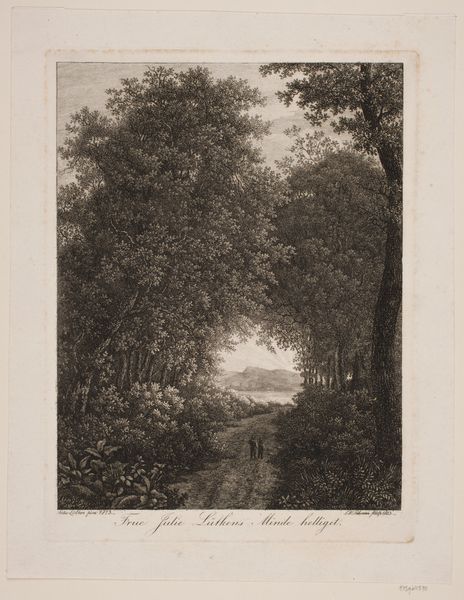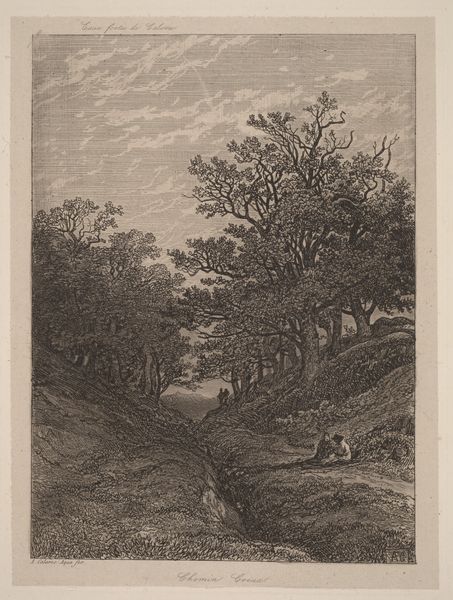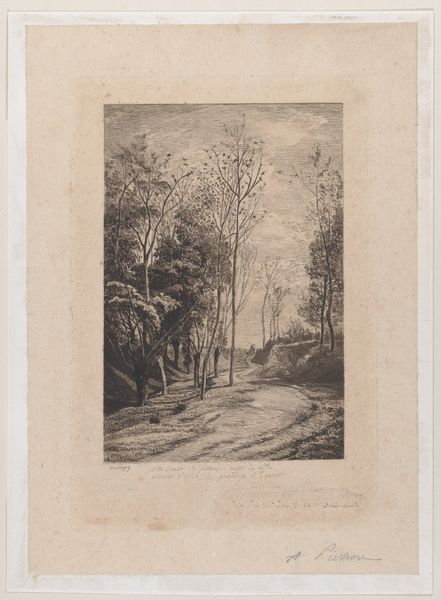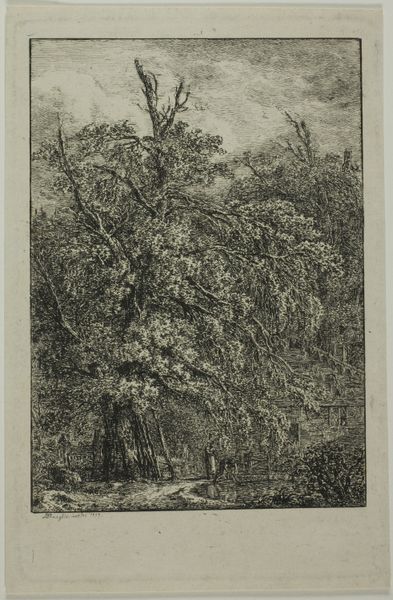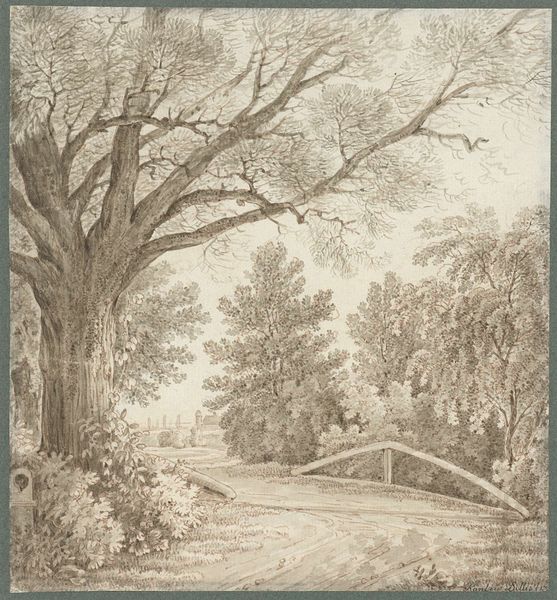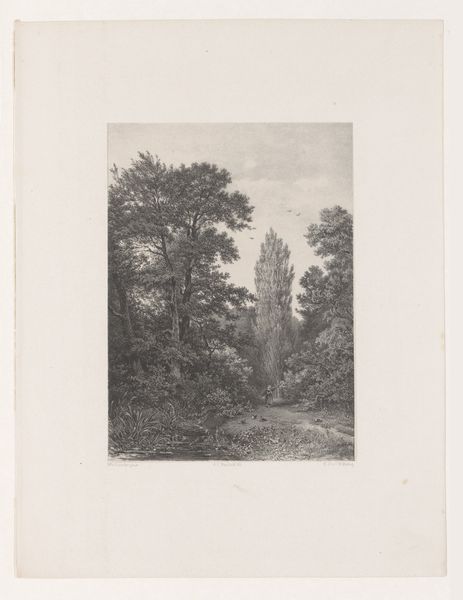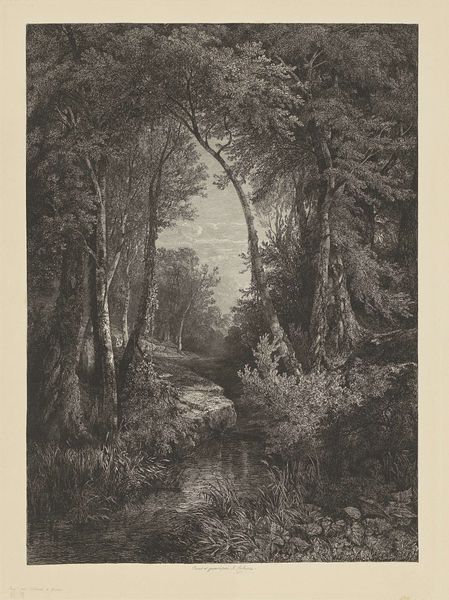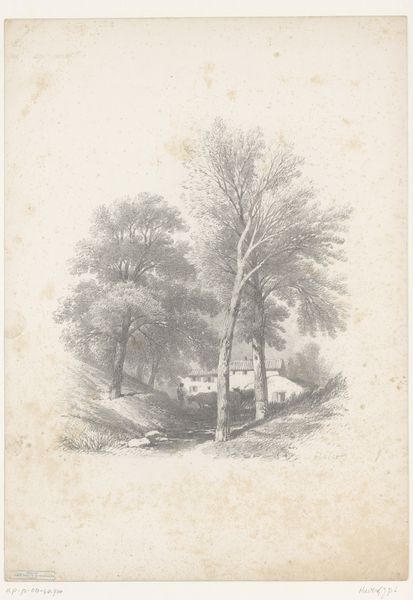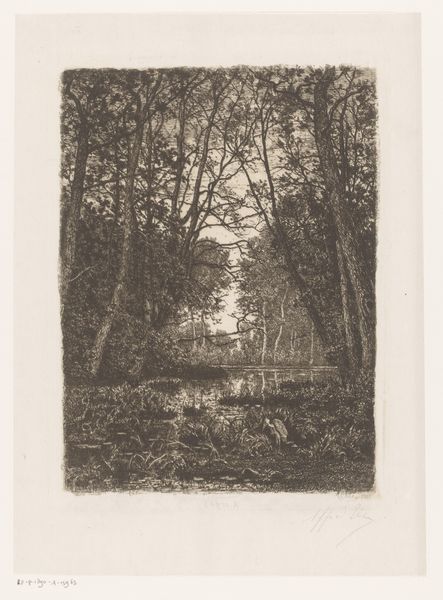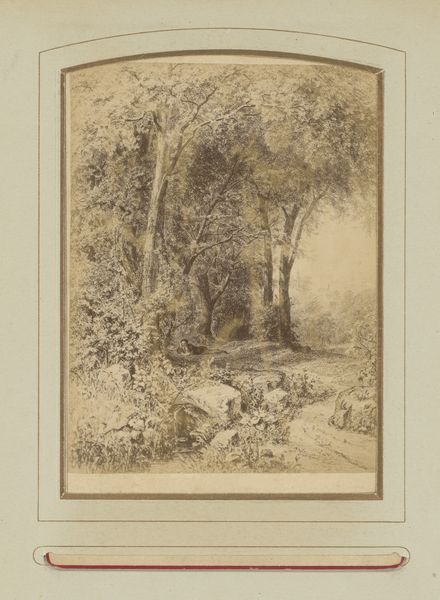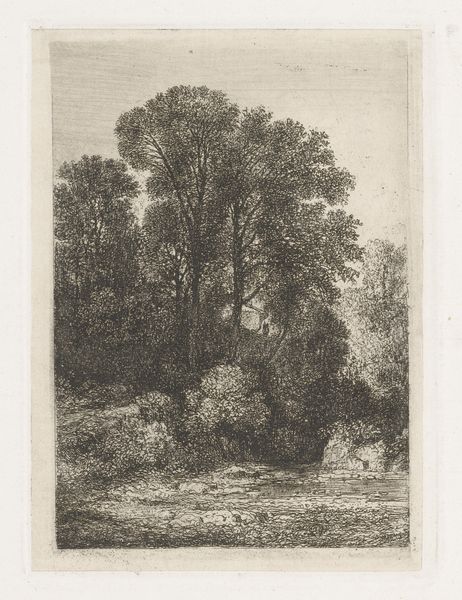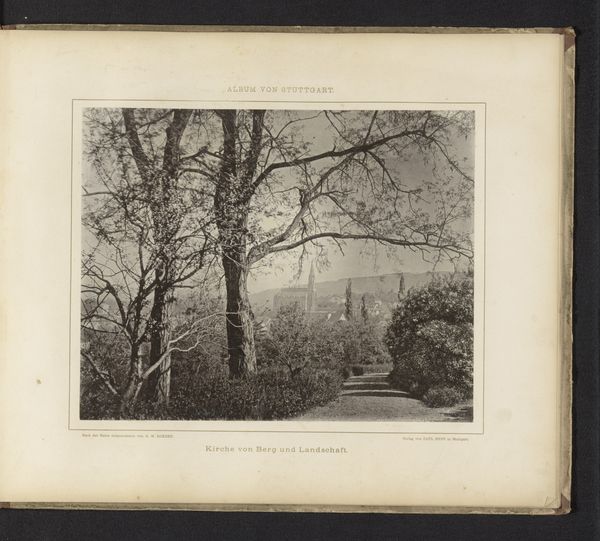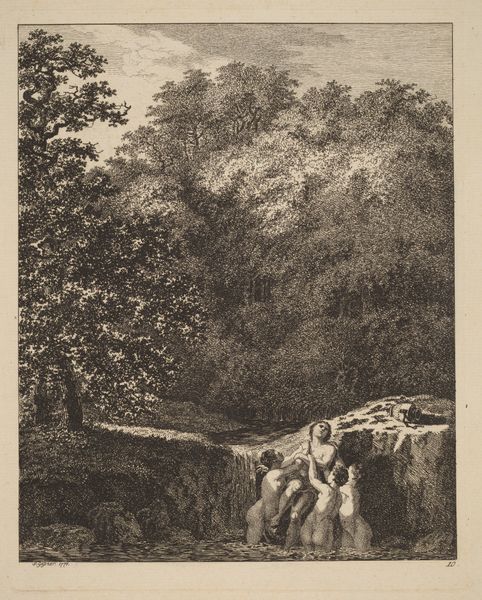
print, etching
# print
#
etching
#
landscape
#
etching
#
romanticism
Dimensions: 265 mm (height) x 200 mm (width) (plademaal)
Curator: Let’s turn our attention to "Skovvej," created in 1823 by Søren Henrik Petersen, currently residing at the SMK, Statens Museum for Kunst. It’s an etching, showcasing a pathway receding into the distance. What strikes you initially? Editor: There's a striking tension in this image; an oppressive density, yet the bright point in the background evokes possibilities, maybe even hope. I am intrigued by this contrasting visual rhetoric of Romanticism. What historical factors drove this dichotomy? Curator: I’d say the etching taps into early 19th-century Denmark’s socio-political landscape—a time of burgeoning nationalism intertwined with a distinct melancholy following the Napoleonic Wars. Landscape art becomes pivotal, providing both an imagined idyllic escape, but also hinting the potential in times of economic change. This artwork highlights themes of introspective journeys, where nature acts as a mirror for personal contemplation but also an opportunity for economic exploration. Editor: Indeed, the role of nature in national identity formation during that period can't be overlooked. How did the artist leverage visual cues—composition, form, lighting—to convey these specific messages to the contemporary audience of 1823? For example, that path leading towards the bright spot feels almost like the path to industrialization. Curator: The technique itself is telling. Etching allows for meticulous detail, mirroring Romanticism's hyper-realistic approach. See how Petersen meticulously renders textures, the play of light on leaves… Notice the relatively small figures on the path; they emphasizes the vastness of nature, inviting us to reflect upon our position within the greater ecosystem and nascent societal reorganization of Danish society. Editor: Right. But consider how that visual framing itself could function. I think that the way forward is clearly framed to bring the viewer, potentially of a different gender or economic standing to the tiny individuals in the distance into conversation, thus creating art as a truly public experiment of that time. Curator: Absolutely. I’ve always appreciated the dialogue Petersen sparks about our perception of place and progress during his time, which mirrors our contemporary experience, I'd suggest. Editor: I completely agree. And I also think it calls into question if this work is more than just romantic sentimentalism; the artist truly seems to anticipate issues around national and ecological well-being that still affect us. Curator: It seems that "Skovvej" still has things to teach us even now.
Comments
No comments
Be the first to comment and join the conversation on the ultimate creative platform.
